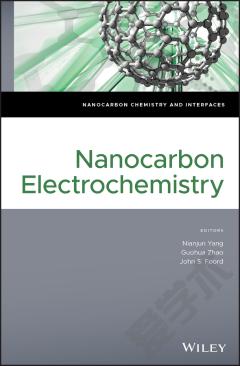Nanocarbons for Electroanalysis
A comprehensive look at the most widely employed carbon-based electrode materials and the numerous electroanalytical applications associated with them. A valuable reference for the emerging age of carbon-based electronics and electrochemistry, this book discusses diverse applications for nanocarbon materials in electrochemical sensing. It highlights the advantages and disadvantages of the different nanocarbon materials currently used for electroanalysis, covering the electrochemical sensing of small-sized molecules, such as metal ions and endocrine disrupting chemicals (EDCs), as well as large biomolecules such as DNA, RNA, enzymes and proteins. A comprehensive look at state-of-the-art applications for nanocarbon materials in electrochemical sensors Emphasizes the relationship between the carbon structures and surface chemistry, and electrochemical performance Covers a wide array of carbon nanomaterials, including nanocarbon films, carbon nanofibers, graphene, diamond nanostructures, and carbon-dots Edited by internationally renowned experts in the field with contributions from researchers at the cutting edge of nanocarbon electroanalysis Nanocarbons for Electroanalysis is a valuable working resource for all chemists and materials scientists working on carbon based-nanomaterials and electrochemical sensors. It also belongs on the reference shelves of academic researchers and industrial scientists in the fields of nanochemistry and nanomaterials, materials chemistry, material science, electrochemistry, analytical chemistry, physical chemistry, and biochemistry.
{{comment.content}}








 京公网安备 11010802027623号
京公网安备 11010802027623号